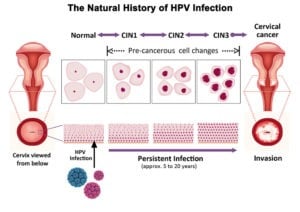
There are many options for treatment for cervical cancer. It’s important to talk to your doctor about your options and to ask questions to be sure you understand what’s going to work best for you. Different types of treatment are available, and the choice you make will depend on your age, general health, and individual circumstances. You also have to consider the possible side effects of treatments. If you’re unsure about whether or not you’ll be able to have children, you should discuss your condition with your doctor.
Some women have their cancer removed at the same time as chemotherapy. During chemotherapy, a narrow beam of light is used to cut the tissue, making bloodless cuts. The laser beam can also remove surface lesions, such as a cyst or lump. The type of laser surgery you receive will depend on the stage and location of your cervical cancer. If you’ve had surgery to remove the tumor, your doctor will have to decide how to treat the remaining tumor.
After the primary treatment, your doctor will use an immune therapy known as pembrolizumab. This drug targets the proteins PD-1 and PDL-1, which block the body’s immune system from killing cancer cells. This treatment is used in women who have had chemotherapy and have not responded to it. A person with advanced cervical cancer may also have a tumor that has come back after chemotherapy. A doctor will choose the right treatment for you based on your specific situation.
In addition to targeted therapy, your doctor may recommend targeted therapies, which use small amounts of manmade antibodies to target cancer cells. These monoclonal antibodies mimic your body’s antibodies and latch onto substances on cancer cells. They kill them, or prevent their growth. One of the most common monoclonal antibodies used for cervical disease is bevacizumab. This type of drug blocks the growth of new blood vessels, which help the tumor grow.
Radiation therapy is another option for treating cervical cancer. The radiation therapy is usually given using a narrow laser beam as a knife. This allows doctors to deliver radiation to the cancer cells in the cervix. There are several types of treatment for this disease, and each one has different side effects. Depending on the type of tumor, you may be able to have a combination of these treatments. They are both effective, but it’s important to remember that the choice depends on which treatments are best for your situation.

In some cases, surgery may not be needed to treat cervical cancer. However, you may want to have chemotherapy after your doctor has ruled out any other serious medical conditions. You can also take a combination of different treatments for cervical cancer. While you will most likely have to undergo multiple procedures to get the most effective treatment, you will have many options. If you are diagnosed with cervical squamous cell carcinoma, you will need several surgeries to remove the tumor and save your life.
There are many treatments for cervical cancer described on the site cth.co.th. Surgical removal may be necessary if the cancer has spread beyond the cervix. If it has spread beyond the cervix, you may need surgery. In these cases, cancer treatment will focus on the organs around the cervix. In some cases, doctors will use a combination of both treatments. They will then decide what is best for you.
Surgical procedures for cervical cancer can be very expensive and involve multiple surgeries. In some cases, the cancer has spread to other parts of the body. To treat this condition, the surgeon must remove the cervix and pelvic organs. A doctor may also use chemotherapy to treat other symptoms. This may include the use of immunotherapy or immunotherapy. Treatment will depend on the type of cervical cancer and your condition.
If you have cervical cancer, surgery may be a good option. The specialist will be able to perform surgical interventions on cancer while maintaining healthy tissue. Depending on the type of cervical cancer, you may need cervical radiation therapy. Doctors will also remove any remaining tumors. Some women will only need chemotherapy once, but the treatment is not permanent. If it spreads to other parts of the body, they will need to undergo additional chemotherapy.